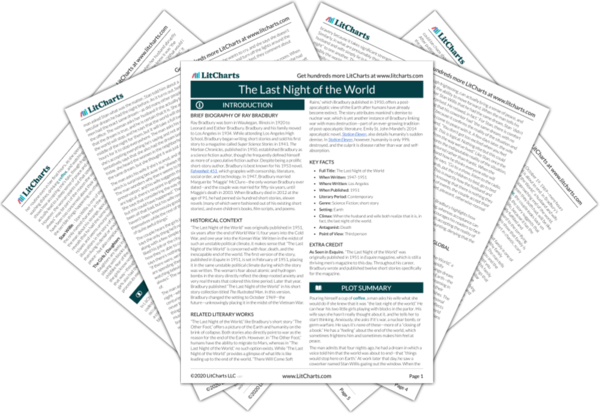Next
Summary
The Last Night of the World Study Guide |
Next
Summary
|
Welcome to the LitCharts study guide on Ray Bradbury's The Last Night of the World. Created by the original team behind SparkNotes, LitCharts are the world's best literature guides.

As Seen in Esquire. “The Last Night of the World” was originally published in 1951 in Esquire magazine, which is still a thriving men’s magazine to this day. Throughout his career, Bradbury wrote and published twelve short stories specifically for the magazine.